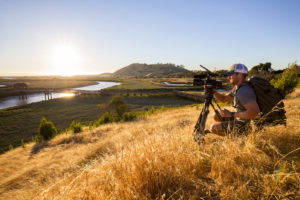Howard Shellhammer is known as the champion of a very rare mouse. A world expert on the endangered salt marsh harvest mouse, the former San Jose State biology professor has studied these diminutive rodents for over four decades, and spoken out often on their behalf. Defending the mouse “is a way to defend marshes,” Shellhammer says. “Because if the marsh supports this mouse, it will also likely support the California clapper rail and salt marsh wandering shrew, two other species of concern.”
Since Shellhammer began studying them in 1961, the mouse’s numbers have dwindled at an alarming rate. Small populations survive today in isolated marshes scattered around the Bay. The primary reason for their decline is loss of habitat. Even though they are good swimmers, the mice need a zone of upper marsh thick with salt-tolerant plants in which to take cover during high-high tides. This habitat has been reduced by development and subsidence to strips just a few feet wide on the steep sides of levees.
According to Shellhammer, the pending large-scale conversion of salt ponds back to marsh is the potential life raft that could keep the salt marsh harvest mouse—and its complex wetland habitat—alive.
“I hope it will hang on,” Shellhammer says. “I’m arguing as much as I can for complete marshes with adequate escape cover for the mice. I’d like to see fairly large marshes with complete habitat zones included in this restoration process. Right now, small populations disappear in bad years and since they are often separated by too much unsuitable habitat the marshes don’t get restocked. Increasing the size and connectivity of the marshes would prevent genetic stagnation and increase the mouse’s effective population numbers.”
Shellhammer says he can finally see the light at the end of the tunnel. “I think of them as the ‘once and future marshes.’ Once they were much bigger and more complex than today, but I think someday in the future they will be that way again. And as I get older, I get more confident that this will happen.”

.jpg)



